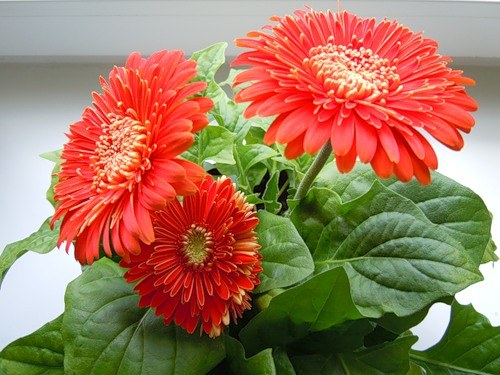You will need
- - Pot
- - concrete block,
- - sand,
- - peat
- - garden earth or leaf humus.
Instruction
1
Grow gerberas in the greenhouse, they get into your home, where for some time are experiencing severe stress. So don't in the next two weeks to aggravate stress, change in new, more comfortable potty. Give the flower to adapt to a new place and get used to other conditions. The most favorable time to transplant gerbera – spring.
2
Carefully replant gerbera together with a lump of land in a low pot with a wide top, while being careful not to damage the roots. On the bottom of the prepared pot place a layer of drainage, it can be expanded clay or broken bricks.
3
To prepare the substrate mix 1/4 part sand, 1/4 peat and 1/2 garden soil or leaf humus. Pour the prepared soil into the pot two-thirds full. Then carefully remove the gerbera with a lump of land, and move in a new pot. Pour the rest of the soil mix. The root collar should remain above the soil surface. Remember, gerbera categorically can't stand the abundance of organic fertilizers.
4
Care gerberoy after transplantation is reduced to the timely and abundant watering. Do not pour the plant and do not allow drying earthen coma. Water the gerbera at the edge of the pot to defend water at room temperature (it should be not below 20 degrees). It is helpful to spray the leaves of plants (but not flowers), thus the water droplets must be very small.
5
Growing gerberas in the home requires additional lighting, if you want to see the colors. Minimum daylight should be fourteen hours. Therefore, it is advisable to highlight the plant and fluorescent lights. Not harmful gerbera and direct sunlight in the morning and evening. In the summer take out the pots on the balcony or in the garden, they love the fresh air and is absolutely not afraid of drafts.



